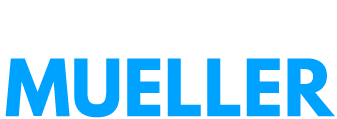Making of Junkyard Chase 6 – Finding an Artist
So you’re a writer with little to no art skills, or you just want to use someone else’s artwork for your comic (like me). This means you need to find, recruit, and work with an artist.
This entry in the “Making of” series will focus on the first two points: finding and recruiting an artist.
It’s never been easier to find an artist than it is today, especially with this crazy invention called “the internet.” Artists are everywhere, and unless they’re shy (or crazy), they want people to see their artwork.
Where are some places they hang out? Chances are they have their own online portfolios, so a quick google search for “comic artist” or some such variation of that could help make some discoveries. Deviantart.com is another place where artists like to showcase their work. Social networking sites such as facebook, drunkduck, or even myspace (although maybe less so these days) can be other places to find an artist that matches the style you’re going for in your storytelling. Maybe a friend or classmate could also work with you on a story.
Then there’s networking.
Going to comic conventions is another great place to meet artists, and being a professional comic creator myself, I also have an entire library of artists through my writing friends. One of them is Jeong Mo Yang who I’ve met at a few shows, and several of my friends have used for their comics.
Jeong has a very kinetic style of art (ie: there’s a lot of motion in his characters) and I knew that with a physical comedy book like this, that was going to be important. Plus, my friends have ranted and raved about his ability to work fast, meet deadlines, and turn around an awesome product.
Without getting ahead of myself, the man did not disappoint.
So before I reached out to Jeong I wrote down a quick synopsis – a summary of the story highlighting the key points and events – to get him excited about it and sign him on.
It’s a good idea to have a synopsis or a pitch ready for recruiting an artist (or sending to an editor, if you want to get published). Just a quick summary of the story, a breakout of the characters, and maybe your outline of what happens in the story. We have all that – we did it earlier – so this is easy to put together and send out.
It’s also a good idea to be willing to pay your collaborators.
Professionals are people who get paid for doing a job, and if you want top-quality artists to work with you, then you need to be willing to pay them. I’ve worked with other artists with various payment methods – we both get the .pdf at the end and make money off our own sales, we co-share the rights to the story, we pay on a per-page basis, we pay on a flat project fee.
Depending on how much you care about the story or characters you’re creating, some of these methods above may be more or less desirable. I recommend keeping the rights yourself and paying your collaborators – keeps things simple later down the road.
After agreeing on a budget for the project, Jeong signed on and we were working together. But how did the collaborative process work? We’ll review that next time, folks.








